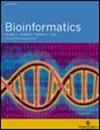PQSDC: a parallel lossless compressor for quality scores data via sequences partition and Run-Length prediction mapping.
IF 4.4
3区 生物学
Q1 BIOCHEMICAL RESEARCH METHODS
引用次数: 0
Abstract
MOTIVATION The quality scores data (QSD) account for 70% in compressed FastQ files obtained from the short and long reads sequencing technologies. Designing effective compressors for QSD that counterbalance compression ratio, time cost, and memory consumption is essential in scenarios such as large-scale genomics data sharing and long-term data backup. This study presents a novel parallel lossless QSD-dedicated compression algorithm named PQSDC, which fulfills the above requirements well. PQSDC is based on two core components: a parallel sequences-partition model designed to reduce peak memory consumption and time cost during compression and decompression processes, as well as a parallel four-level run-length prediction mapping model to enhance compression ratio. Besides, the PQSDC algorithm is also designed to be highly concurrent using multi-core CPU clusters. RESULTS We evaluate PQSDC and 4 state-of-the-art compression algorithms on 27 real-world datasets, including 61.857 billion QSD characters and 632.908 million QSD sequences. (1) For short reads, compared to baselines, the maximum improvement of PQSDC reaches 7.06% in average compression ratio, and 8.01% in weighted average compression ratio. During compression and decompression, the maximum total time savings of PQSDC are 79.96% and 84.56%, respectively; the maximum average memory savings are 68.34% and 77.63%, respectively. (2) For long reads, the maximum improvement of PQSDC reaches 12.51% and 13.42% in average and weighted average compression ratio, respectively. The maximum total time savings during compression and decompression are 53.51% and 72.53%, respectively; the maximum average memory savings are 19.44% and 17.42%, respectively. (3) Furthermore, PQSDC ranks second in compression robustness among the tested algorithms, indicating that it is less affected by the probability distribution of the QSD collections. Overall, our work provides a promising solution for QSD parallel compression, which balances storage cost, time consumption, and memory occupation primely. AVAILABILITY The proposed PQSDC compressor can be downloaded from https://github.com/fahaihi/PQSDC. SUPPLEMENTARY INFORMATION Supplementary data are available at Bioinformatics online.PQSDC:通过序列分区和运行长度预测映射的并行无损质量分数数据压缩器。
动机在长短读数测序技术获得的 FastQ 压缩文件中,质量分数数据(QSD)占 70%。在大规模基因组学数据共享和长期数据备份等应用场景中,设计有效的 QSD 压缩器以平衡压缩率、时间成本和内存消耗至关重要。本研究提出了一种名为 PQSDC 的新型并行无损 QSD 专用压缩算法,很好地满足了上述要求。PQSDC 基于两个核心组件:旨在减少压缩和解压缩过程中峰值内存消耗和时间成本的并行序列分区模型,以及旨在提高压缩比的并行四级运行长度预测映射模型。我们在 27 个实际数据集(包括 618.57 亿个 QSD 字符和 6.32908 亿个 QSD 序列)上评估了 PQSDC 和 4 种最先进的压缩算法。(1) 与基线算法相比,PQSDC 对短读取数据的平均压缩率最大提高了 7.06%,加权平均压缩率提高了 8.01%。在压缩和解压缩过程中,PQSDC 最大节省的总时间分别为 79.96% 和 84.56%;最大节省的平均内存分别为 68.34% 和 77.63%。(2) 对于长读取,PQSDC 在平均压缩率和加权平均压缩率方面的最大改进分别达到 12.51% 和 13.42%。压缩和解压缩过程中节省的总时间最大值分别为 53.51% 和 72.53%;节省的平均内存最大值分别为 19.44% 和 17.42%。(3) 此外,PQSDC 的压缩鲁棒性在测试算法中排名第二,表明它受 QSD 集合概率分布的影响较小。总之,我们的工作为 QSD 并行压缩提供了一种很有前途的解决方案,它主要平衡了存储成本、时间消耗和内存占用。AVAILABILITY拟议的 PQSDC 压缩器可从 https://github.com/fahaihi/PQSDC.SUPPLEMENTARY 下载。
本文章由计算机程序翻译,如有差异,请以英文原文为准。
求助全文
约1分钟内获得全文
求助全文
来源期刊

Bioinformatics
生物-生化研究方法
CiteScore
11.20
自引率
5.20%
发文量
753
审稿时长
2.1 months
期刊介绍:
The leading journal in its field, Bioinformatics publishes the highest quality scientific papers and review articles of interest to academic and industrial researchers. Its main focus is on new developments in genome bioinformatics and computational biology. Two distinct sections within the journal - Discovery Notes and Application Notes- focus on shorter papers; the former reporting biologically interesting discoveries using computational methods, the latter exploring the applications used for experiments.
 求助内容:
求助内容: 应助结果提醒方式:
应助结果提醒方式:


